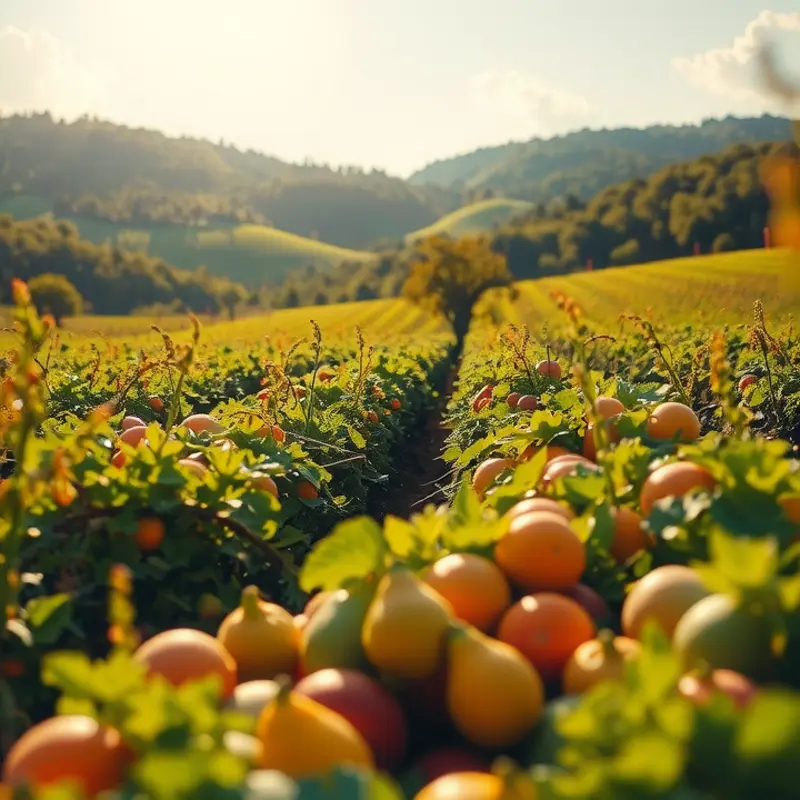High-altitude regions around the world are not just breathtaking vistas; they are also home to unique culinary customs influenced by their elevated environments. From the Andes to the Himalayas, cooking at altitude poses distinct challenges and opportunities that shape local dishes. This article dives into how altitude affects cooking methods, ingredient selection, and traditional practices, inviting food enthusiasts to savor the authenticity of high-altitude cuisines and appreciate the rich cultural heritage behind them.
Altitude Cooking Science: The Challenges and Adaptations

Understanding the science behind cooking at altitude is essential for crafting meals that maintain flavor and texture. High altitudes affect cooking processes primarily due to changes in air pressure. As elevation increases, atmospheric pressure decreases, causing water to boil at lower temperatures. For instance, while water boils at 212°F at sea level, it may boil at around 194°F at 5,000 feet. This lower boiling point impacts everything from boiling vegetables to the preparation of broths and stews.
Such temperature differences mean that cooking times often increase. Since water evaporates more quickly, moisture loss is a significant challenge. Chefs often compensate by adjusting the proportions of liquid in recipes and covering pots to retain moisture. Stews and soups might require more broth, while baked goods often need higher-fat content to prevent dryness.
Baking at altitude presents its own set of unique challenges. Reduced air pressure requires modifications in baking powder and sugar quantities to avoid overly airy or collapsing cakes and bread. Many high-altitude bakers incrementally adjust ingredients based on their specific environments until achieving the desired rise and texture.
Local ingredients also play a pivotal role in high-altitude cuisine. These ingredients evolve to withstand extreme conditions, resulting in flavors and textures that are particularly suited for altitude cooking. For example, ancient grains like quinoa thrive in mountainous terrains and are staple ingredients due to their nutrient density and adaptability.
High-altitude cooks showcase resilience and creativity through their adaptations. For instance, to combat quick moisture loss, techniques such as sous vide—cooking vacuum-sealed food in a temperature-controlled water bath—are increasingly popular. This method ensures even cooking and moisture retention.
To further enhance flavor in lower pressure environments, utilizing herbs and spices becomes critical. High-altitude regions often have a rich history of using local spices, which are not only flavorful but also support health, blending traditional knowledge with culinary innovation.
Cooks facing these challenges showcase an impressive array of skills and culinary savvy, crafting dishes that speak to the ingenuity required in such environments. The blend of scientific understanding and cultural tradition results in unique culinary philosophies. The determination to perfect high-altitude cooking reflects a larger global narrative of food resilience and creativity.
For those interested in the practical aspects of ingredient management and minimizing waste while adapting to environmental constraints, exploring low waste cooking tips can provide valuable insights into efficient meal prep and ingredient usage.
Culinary Traditions: Dishes Born from the Clouds

Nestled in the rarefied atmosphere of high-altitude regions are culinary traditions as elevated as the towering peaks themselves. These areas boast cuisines that are not merely adaptations but profound expressions of life in challenging conditions. Consider Tibetan momos. These delicately steamed dumplings encapsulate the heart of Himalayan cuisine. Thin-skinned and versatile, momos can be filled with yak meat, a staple adapted to the harsh environment, or vegetables to suit the vegetarian palate. Influenced by Tibetan Buddhism, the preparation of momos reflects a deep respect for ingredients and the ritualistic aspect of shared meals.
Further south, Peru’s Andean regions tell similar stories of adaptability and reverence. Here, pachamanca, a traditional dish dating back to the Inca Empire, employs a unique method of cooking with hot stones. The name itself, “pacha” meaning earth and “manca” meaning pot in Quechua, reflects the dish’s deep connection to the land. Meat, herbs, and potatoes are layered and buried under earthen ovens, infusing them with rich, earthy flavors. This ancient technique is not only a bond with the earth but a celebration of communal labor, often performed during festivals and significant gatherings.
In these elevated regions, cooking isn’t merely about sustenance. It’s a testament to survival and ingenuity. Varied climates and altitudes mean limited growing seasons, impacting available ingredients. Yet, these culinary landscapes boast diverse dishes born of necessity and resourcefulness. For example, in Bhutan, red rice thrives in high-altitude terraces, forming the backbone of their meals. Its nutty flavor and unique texture perfectly complement the country’s fiery culinary style dominated by chili-infused dishes.
Altitude, while presenting challenges, also offers unique advantages. Foods like Tibetan tsampa, a form of roasted barley flour, provide high energy to endure cold mountain environments. In Bolivia, the quinoa grain, hailed for its nutritional benefits, thrives at altitudes that challenge other crops. Integration of such ingredients creates menus that not only please the palate but sustain the body.
Culturally, these dishes symbolize endurance, community, and reverence for nature’s bounty, connecting diners to a broader narrative beyond flavors alone. In a society where culinary influences from trade routes can be seen in even high-altitude cuisines, the fusion of local ingredients with inbound ideas further enriches these traditions. This notion echoes through an exploration of how trade has historically shaped global cuisines, reflected in culinary influences.
In essence, each bite from these high-altitude specialties offers a passage through time and space, an experience that extends beyond mere nourishment to embrace the stories and landscapes forged in the clouds.
Final words
High-altitude cooking offers a unique lens through which to appreciate culinary traditions that are deeply intertwined with nature, climate, and culture. As food enthusiasts explore dishes from these elevated landscapes, they encounter flavors that not only satisfy the palate but also tell the stories of communities and their environments. By embracing the resilience of high-altitude cooks and the creativity required to adapt to challenging culinary conditions, we enrich our understanding of global cuisines and reinforce the beauty found in their diversity. Next time you savor a high-altitude dish, remember its roots in both earth and sky.








